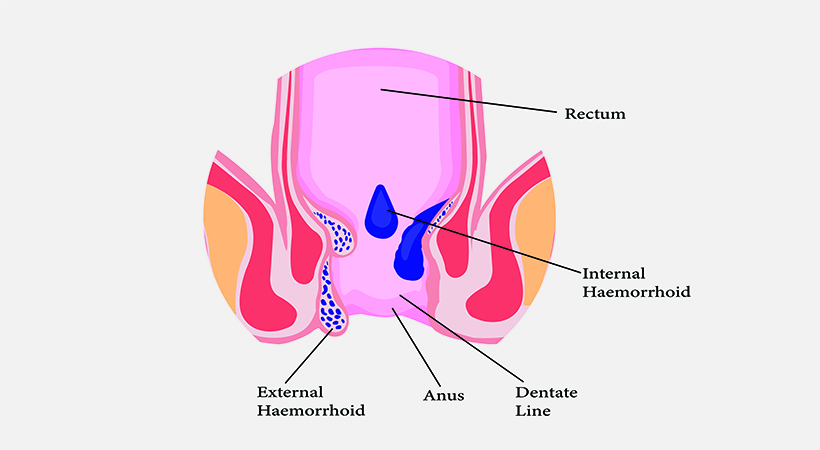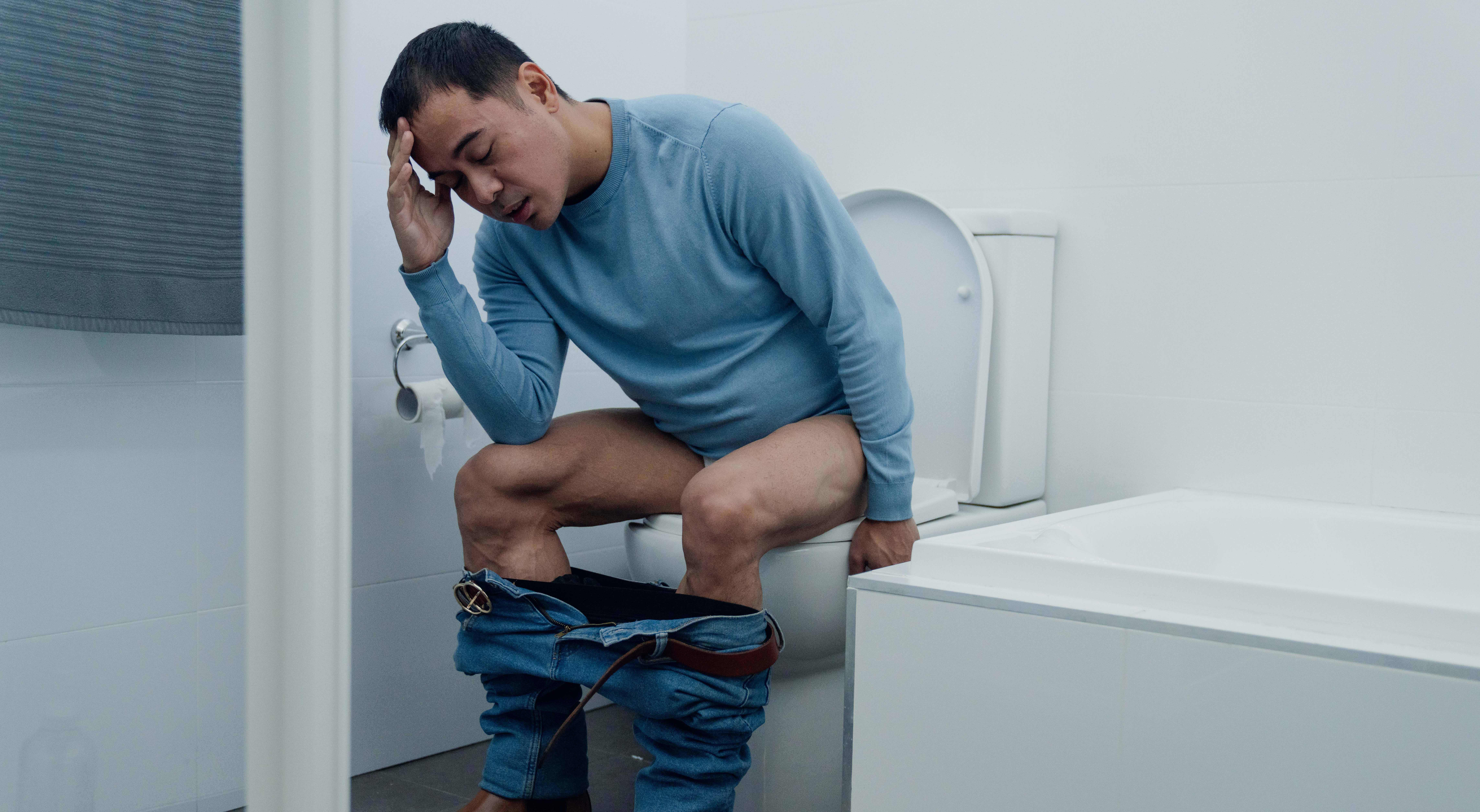It’s time to break the taboo and talk about those pesky little bum jewels – haemorrhoids.
Adding anal to the mix makes haemorrhoids an even itchier subject. But as gays who may enjoy receiving or giving butt play, it’s important to know what exactly those hole posts are and what to do about them so that you can take care of your own (or someone else’s) assets.
A pain in the butt, haemorrhoids are, unfortunately, very common. In fact, more than half of people will experience them before they’re fifty.
We’ll take you through everything you need to know about these arse grapes and talk all things prevention and treatment, so you can get back to being a busy bottom ASAP!
Can I bottom with haemorrhoids?
If you’ve ever had one, you’d know that haemorrhoids can be painful. So, getting fucked can irritate them, meaning more pain for you. You know your body best, so if your haemorrhoids are minor and not sensitive to touch, this should not stop you from bottoming. Just go nuts with good lube (and your method of HIV prevention) for your comfort and to avoid irritating your haemorrhoids.

It’s best to postpone anal play and give yourself time to heal if you have any tears, bleeding, or uncomfortable haemorrhoids down there. Comfort aside, this is also a good idea, as having open wounds (such as haemorrhoids that bleed) increases your risk of HIV and STIs.
This doesn’t mean you have to cancel tonight’s Grindr date altogether. There are plenty of ways to enjoy sex without anal. Maybe give them an eye-rolling blowjob and enjoy a night of side fun. Perhaps he’s vers or bottom-curious, and you could try topping him.
What are haemorrhoids?
Haemorrhoids (also known as piles) are lumps that appear either inside or around your anus (asshole) that are collections of blood vessels and tissue. There are two main types of piles: internal and external haemorrhoids.

What are internal haemorrhoids?
Internal haemorrhoids are piles that form just inside your anus. They may not be visible when looking at your hole. There are different grades of internal piles depending on their size. Large internal haemorrhoids may also stick out of your anus.
What are external haemorrhoids?
External haemorrhoids are lumps that appear outside or around your asshole. Get your partner or a trusty mirror to check for external piles. They can be small, round lumps with red, purple, or no colour. There are other causes of lumps that need to be differentiated and could occur at the same time, this includes STIs such as syphilis, mpox and HPV. Don’t assume the lumps are always haemorrhoids, and have them checked out.
What are the symptoms of haemorrhoids?
Many people experience no or mild symptoms that disappear after a few days. For other people, piles can cause symptoms such as:
- Painless rectal bleeding during defecation
- Itching, discomfort, or pain around your anus
- For external and serious internal haemorrhoids, the lump may stick out of your hole (also called a prolapse). Occasionally, this lump can be painful and later become a hard bump.
What causes haemorrhoids?
Let’s brush up on some arse anatomy! The side of your anal canal has a lining. Sometimes, this lining can thicken due to a weakness in your muscles down there. The veins in the lining can enlarge and become a haemorrhoid.
Here are a few quick facts about haemorrhoid causes:
- You can’t ‘catch’ piles from someone who has one.
- Haemorrhoids are commonly caused by constipation and straining on the toilet.
- You can’t get piles from bottoming, but it can irritate existing haemorrhoids (that’s why it’s best to delay anal sex until they settle down).

What is the difference between haemorrhoids vs anal fissures?
You might have heard of anal fissures when talking about bottom care. An anal fissure is a tear in the skin that lines the anus. It differs from a haemorrhoid, can be more painful, and takes longer to heal. They can present similarly, so if you have a fissure or haemorrhoid and are experiencing pain, it is best to see your doctor about it.
How to prevent haemorrhoids?
There are a bunch of things you can add to your routine and diet to help avoid getting a haemorrhoid, such as:
- A high-fibre and balanced diet to avoid constipation
- Good hydration
- Regular exercise
- Avoid lingering on the toilet for long periods
- Use wet wipes or damp toilet paper to avoid rubbing and irritating your ass
- Keep your hole clean and dry.
How are piles diagnosed?
Haemorrhoids are best diagnosed by your doctor. We know asking your doctor about this may be awkward, so we want to prepare you for your visit. They will often perform a Digital Rectal Exam – by placing a gloved and lubricated finger inside your anus to feel for piles. If you feel uncomfortable asking for this from your regular doctor, you can check out our article: Finding a gay-friendly doctor.

How to treat haemorrhoids?
Most mild symptoms of piles will go away after a few days or weeks without treatment.
Here are some other recommended treatments for haemorrhoids:
- Increase your fibre intake with supplements such as psyllium husk and drink plenty of water. The aim is to produce regular, soft poos that reduce straining during defecation. It might take a few weeks to notice a change.
- Over-the-counter pharmacy haemorrhoid treatments (such as creams and stool softeners) can help reduce pain, irritation and swelling
- Sitz bath – a 10–15-minute soak in a warm water bath to soothe your hole several times a day.
- Check if any of your medications could contribute to constipation (check with your doctor before stopping these).
When to go to the doctor
If your haemorrhoids don’t go away after a few weeks and you are experiencing rectal bleeding and pain, book in to see your doctor.
Your doctor can recommend other treatments if they are necessary. Sometimes, haemorrhoids may require surgical treatment.
It is also a good idea to visit your doctor if you have any of the following:
- Anaemia
- Blood mixed in with your poo
- Change in bowel patterns
- Are over 40 years old
- Family history of colon cancer
- Inflammatory bowel disease
The bottom(s) line…
Although it can be uncomfortable, both to have haemorrhoids and to talk about having them, we need to take care of our assets and be open about our sexual health. So, whether you’re a trusty top wanting to take care of your partner’s bussy or a busty bottom feeling a bump in your bootie, keep haemorrhoids in mind. Maybe take a break from DomTop69, test out your side skills, and book yourself in for a doctor’s appointment, so you can get back to having piles of fucking fun!